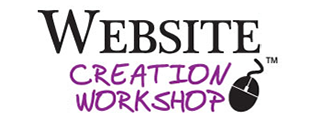Have you ever wanted to take a picture of something on your computer screen? You can! It’s called taking a “screenshot”. A screenshot is a picture of whatever is displayed on your computer screen. You can save that image to your computer or send it to someone else. Keep reading to learn how to take a screenshot on your computer…
Screenshots are easy to do. Plus, they’re useful when you want to explain something visually or keep a record of something on your computer. In this article, I share the steps for taking a screenshot, depending on the type of computer you have. I’ll also recommend an easy and powerful screenshot tool for the Chrome browser.
Why Use Screenshots?
Screenshots are a valuable tool for helping your business run smoothly. They can be used to communicate information with your team and are also a quick and simple way to capture important information you may need to reference later.
Screenshots come in very handy when you’re trying to explain a tech problem to customer support. Talking to a tech support person can be challenging. I’ve shared some great ideas on how to communicate effectively with a tech person. If you send them a screenshot of what you’re seeing, it can help them understand the exact issue.
How to Take a Screenshot
There are many ways to take a screenshot, depending on your computer (Mac or PC) and browser. Everyone will have a different preference. We’ve listed a few options below to help you.
Note: When you’re taking a screenshot, keep in mind that you may not need a full-screen screenshot. You may only want a partial page shot.
Option 1) How to Take a Screenshot with Firefox
Watch this video below on how to take a screenshot with Firefox
Here are the instructions in the video above:
1) Open Firefox.
2) Go to the page that you want to take a screenshot of.
3) Right-click and in the box that pops up, click “Take Screenshot”
4) Click and drag to select what you want to take a screenshot of. (See screenshot below)
5) Then click “Download” (see screenshot below)
6) The image will download to your downloads folder or wherever your computer is set up to download things to. If you’re not sure, you can click on the down arrow in the upper right to find where it is. (see screenshot below)
See this article for more information: https://support.mozilla.org/en-US/kb/firefox-screenshots
Option 2) How to take a screenshot on a Windows Machine on any Browser
https://www.take-a-screenshot.org/windows.html
Click on the tabs on top for the computer you are using, i.e., Windows, Mac, etc.
Also, some PC computers come with software called “Snipping Tool”. Find that program on your computer and follow the directions.
Option 3) How to take a screenshot on a Mac on any Browser
- Press Shift-Apple Command (⌘) 3.
- The screenshot will be on your desktop as a .png file.
See this article for more details:
https://support.apple.com/en-us/HT201361
Another Tool: Nimbus Capture for the Chrome Browser
Another cool screenshot tool my team uses is Nimbus Capture. Nimbus Capture is a free extension for the Chrome browser. If you’re unsure of what an extension is, check out my article where I explain what a browser extension is and how to add them to your toolbar.
With the Nimbus Capture extension, you can save an image of your entire screen or take a screenshot of a certain part of it. In addition, Nimbus has many other features, too, if you’d like to upgrade for a small fee.
Learn more here: https://nimbusweb.me/screenshot.php
Conclusion
This reminds me of the old saying..”A picture is worth a thousand words.”
A simple screenshot can sometimes communicate more effectively than a lengthy explanation. Plus, it allows you to store information at the touch of a button—much easier than printing and filing!
I use screenshots almost daily to store images of websites, communicate with my team, and help my students solve website problems. Screenshots help my business run smoother and save me time and energy.
The best way to get started with screenshots is with a little practice. Go ahead, follow the instructions above for your computer and try it out!



































